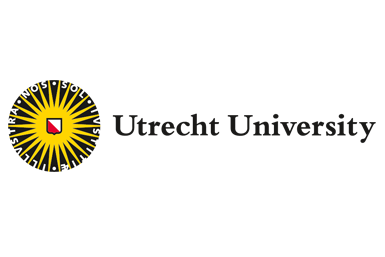Utrecht University: Bijvoet Centre for Biomolecular Research
The Bloembergen building is relatively small compared to the adjacent Kruyt building. All the more unexpected is its large hall, 17 by 22 metres, which now houses a new nuclear magnetic resonance (NMR) instrument, the most powerful of its kind. With this 1.2 GHz NMR, researchers can look into molecules at an unprecedented level of detail. The machine is part of the national uNMR-NL consortium, of which Utrecht University is the coordinator.
The large hall in the Bloembergen building is filled with NMR machines of various sizes, large bottles of liquid nitrogen, and wooden shelves with cables, rolls of tape, test tubes and cardboard boxes. In one of its corners stands the impressive 950 MHz NMR magnet. The set-up is reminiscent of a rocket that is ready for launch: a metres-high cylinder on three legs, enclosed by a wooden scaffold with a staircase.
It has taken more than ten years to develop this machine.
Marc Baldus
Prof. Marc Baldus
NMR Spectroscopy
“An NMR machine is actually a sort of MRI, but at the molecular level,” says Prof. Marc Baldus, Professor of NMR Spectroscopy and coordinator of the NMR consortium. “Since 2015 we have been working with this 950 MHz NMR instrument in Utrecht, but this machine will now be replaced by the very latest, more powerful 1.2 GHz NMR. At the same time, the 950 MHz NMR is moving to Nijmegen.”
Changeover
The changeover is taking place in one day. Joerg Tischler, engineer at manufacturer Bruker: “The 1.2 GHz NMR is our most advanced machine. Worldwide this is only the fifth one we are installing. But the exterior is similar to our other models, so this operation is not new for us. What makes it special, though, is that in one day we take one machine out and install another.”
On the changeover day, the departing NMR already stands dismantled in its corner. The wooden scaffolding has been disassembled and the machine’s torso has been taken off its feet. The operation started about six weeks ago, Baldus explains. “The NMR contains an incredibly strong magnet that is cooled to the extremely low temperature of liquid helium, almost absolute zero. To transport the magnet, you have to turn it off very slowly, to avoid large temperature changes, and carefully let it warm up.”
What is nuclear magnetic resonance (NMR) and what can we do with it? A video about NMR, its applications and the Dutch uNMR-NL facility.
Kilometres of superconducting wire
In the large hall, the departing NMR is gently lifted onto a remote-controlled rolling cart and driven outside, where a crane lifts it onto a large truck. Next to it, on another truck, is a large wooden crate containing the new device.
“We have been looking forward to this moment for a long time,” says Baldus. “It has taken more than ten years to develop this machine.” The new NMR is a technical tour de force: the magnetic field is generated with a coil containing several kilometres of a new type of superconducting wire. “This wire has to be so incredibly even and uniform. At this moment, there is only one factory in the world that can make this kind of magnet.” The resulting magnetic field is more than ten times as powerful as in an average MRI scanner.
Almost 8000 kilos
The new machine, covered in blue plastic, is lifted from its crate onto the remote-controlled cart and wheeled inside. A few suspenseful moments at the lab’s treshold: the wheels of the cart, slick with rain, keep slipping off the treshold instead of making it over. A forklift is called in to give a gentle push; very carefully, because you don’t want to accidentally tip over a machine of almost 8000 kilos. Once the machine has crossed the threshold, a collective sigh of relief can almost be heard behind the face masks.
Impression of the changeover day
Most exciting
Still, the most critical moment is not over yet, says Baldus: “You can’t turn on such a strong magnet in one go. So much heat would be released that the hundreds of liters of liquid helium in the magnet would suddenly evaporate, and the magnetic field would drop back to zero.”
The magnet will first be cooled to almost absolute zero with liquid helium, after which step by step more and more electricity will be sent through the superconducting wire. “That start-up period takes a few weeks, during which we have to keep a close eye on it. If anything goes wrong, we have to let the magnet warm up again and let the liquid helium mostly evaporate. That costs time and money.”
Meanwhile, the new NMR is slowly wheeled into its corner. Mission accomplished? The changeover operation may look impressive to the outside world, but to the researchers it is just one step in a much longer process. If everything goes according to plan, the new NMR should be operational by early summer. Baldus: “The most exciting period for us is actually just beginning. And we’re looking forward to all the new insights that the machine will provide, for example in research into diseases, new materials and living organisms.”
The uNMR-NL consortium consists of research groups at Utrecht University, Wageningen University, Radboud University, Leiden University, the private-public partnership COAST and associated members at the medical centers in Utrecht, Amsterdam, Leiden and Nijmegen.
At Utrecht University the following researchers are involved: Marc Baldus (coordinator), Hugo van Ingen, Markus Weingarth, Andrei Gurinov, Alexandre Bonvin and Gert Folkers.

